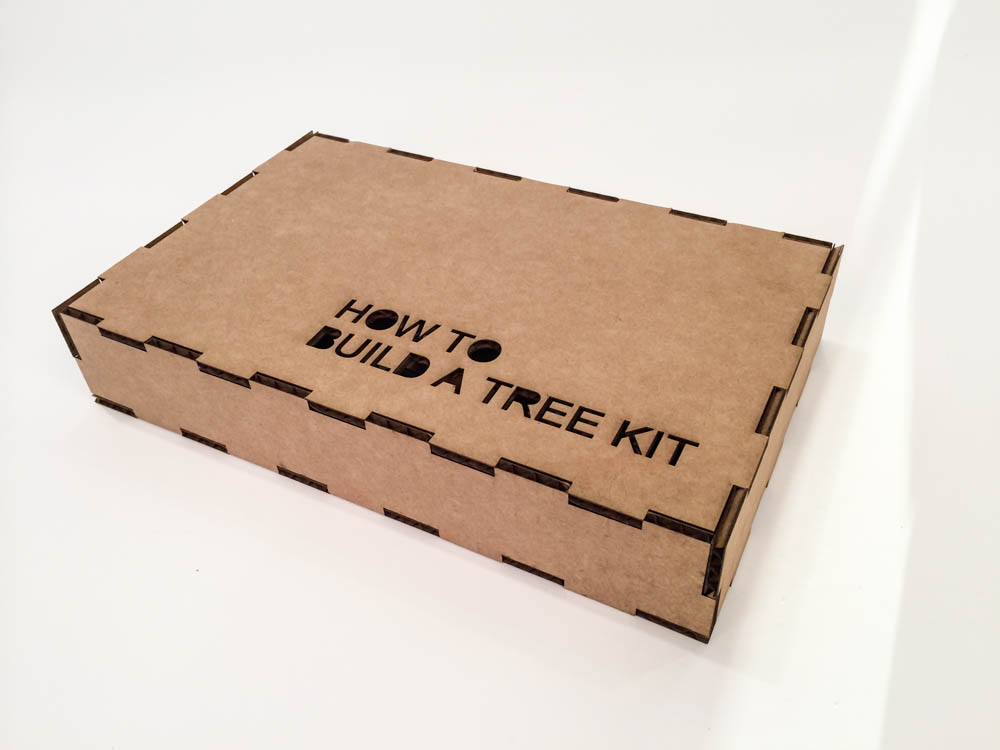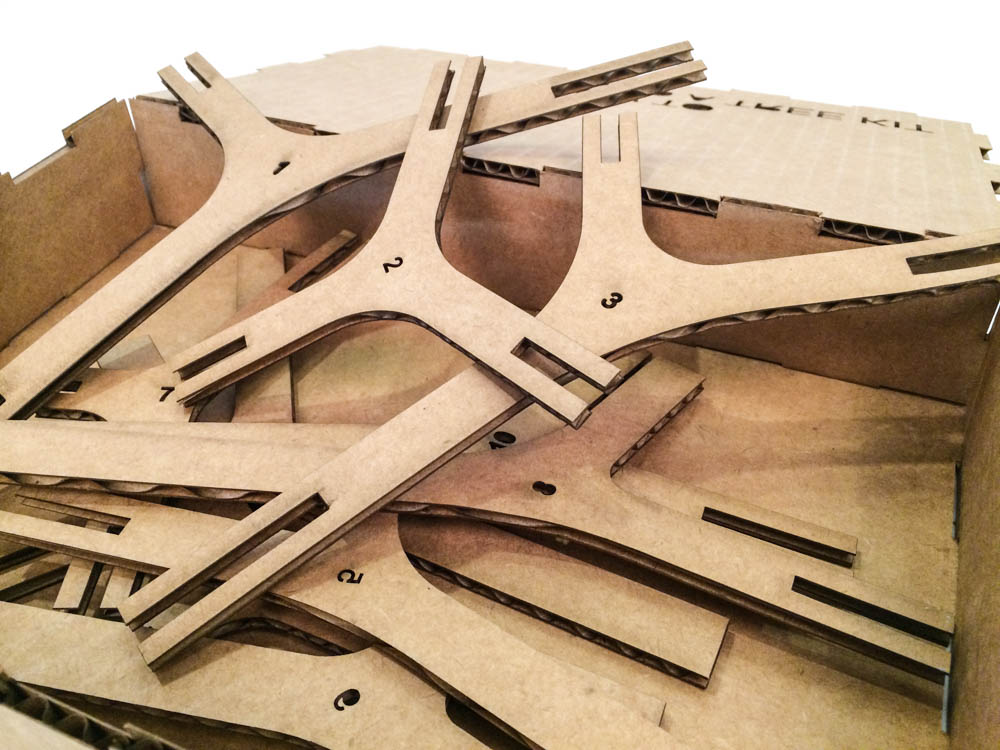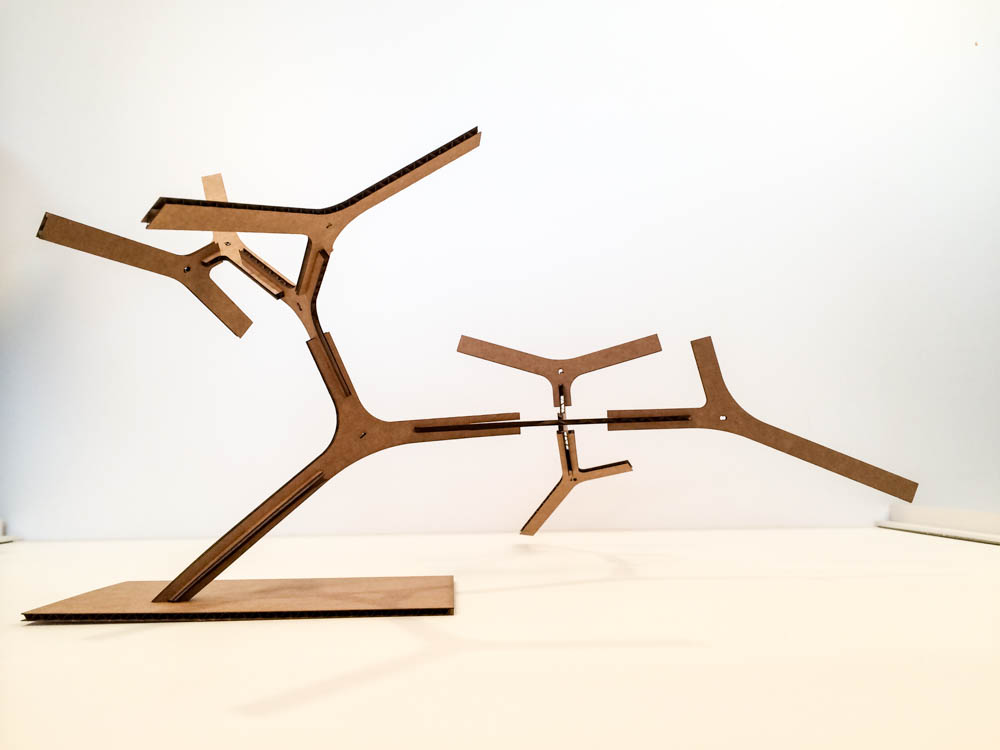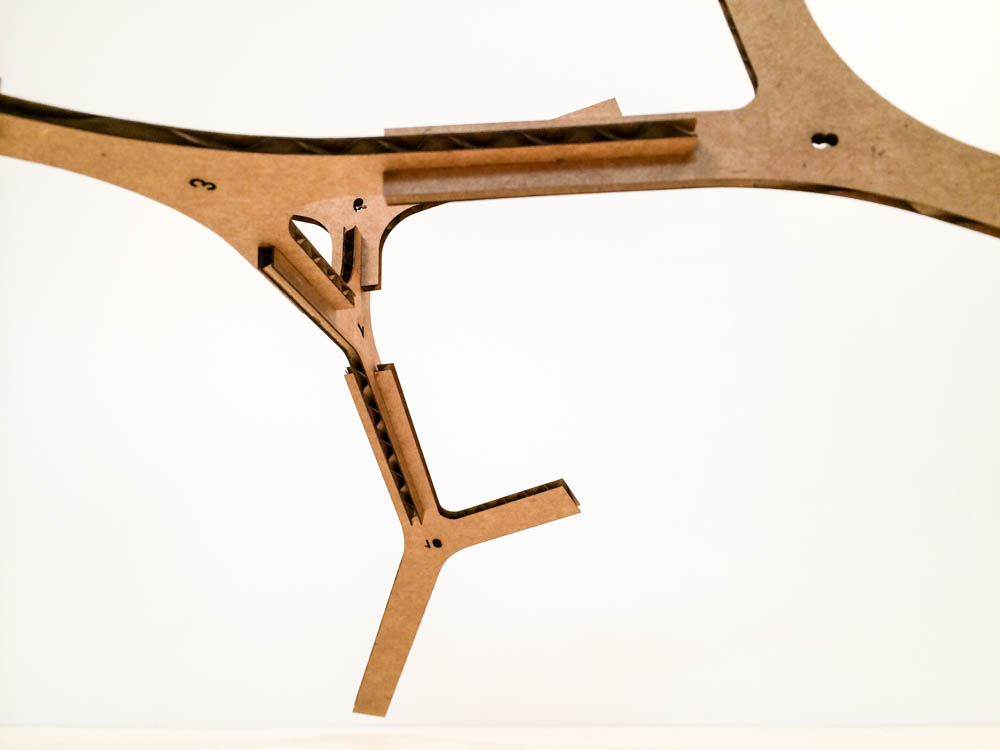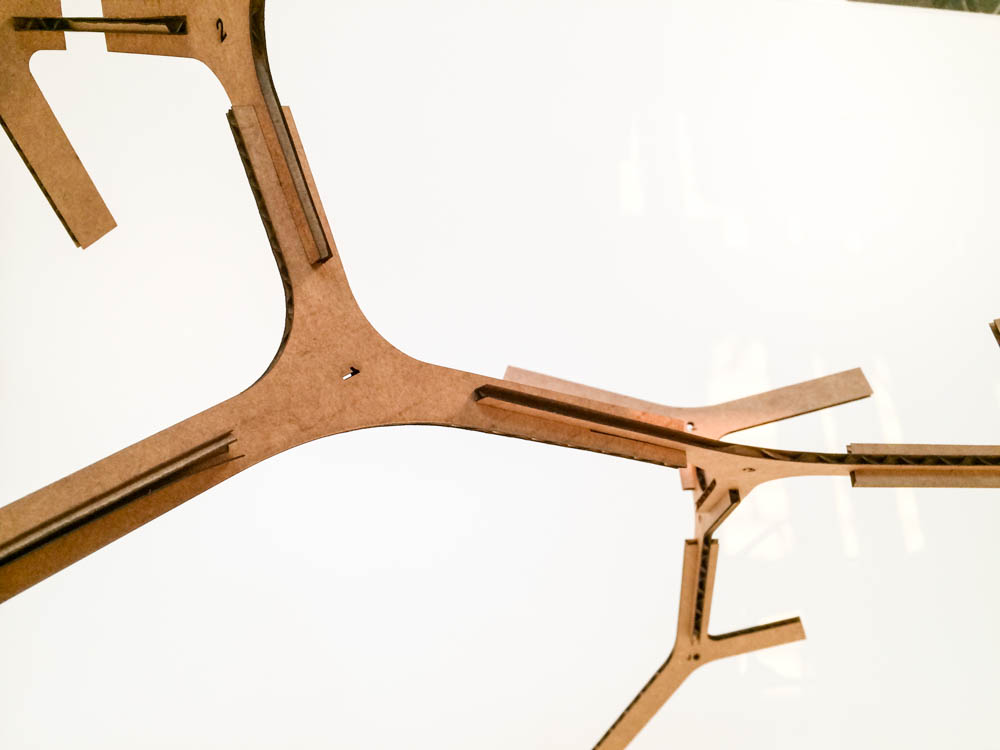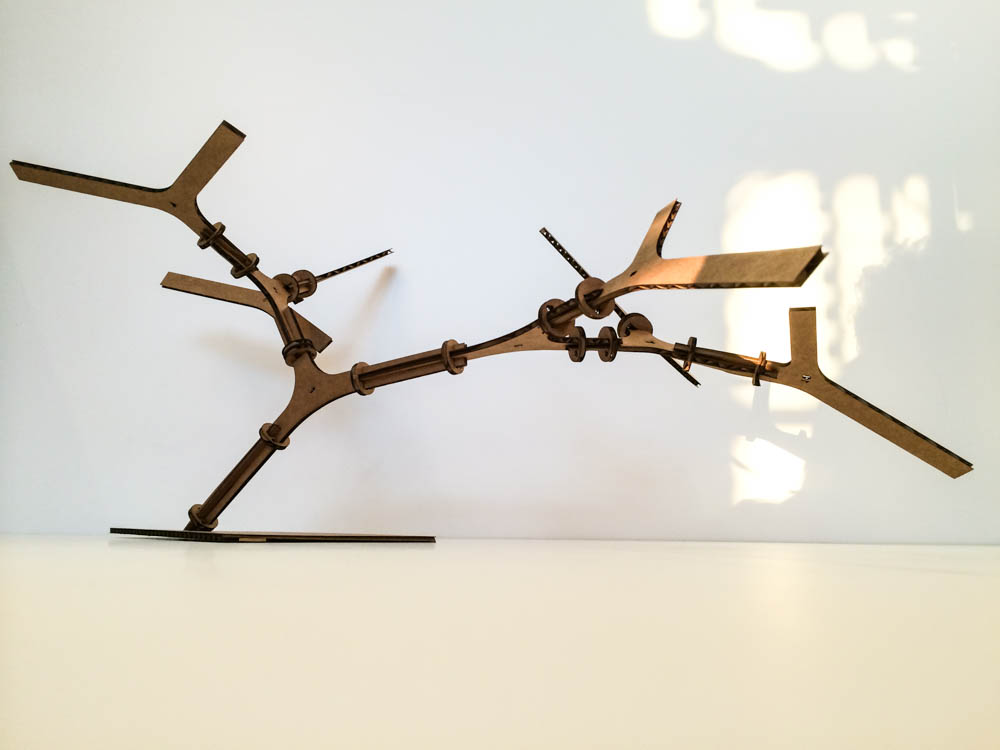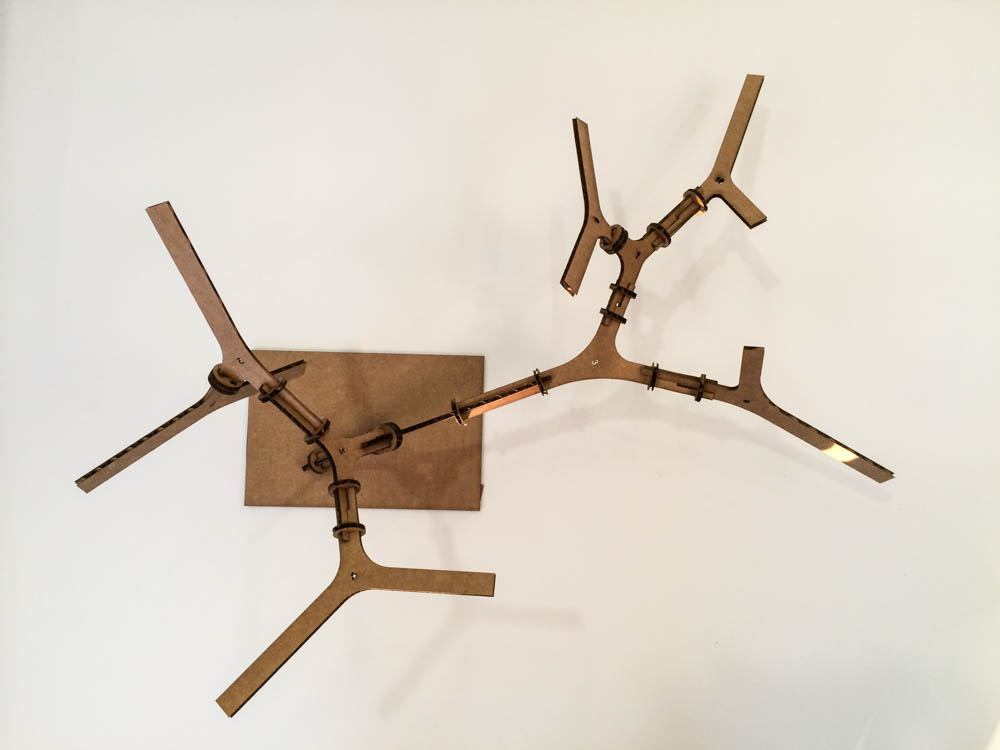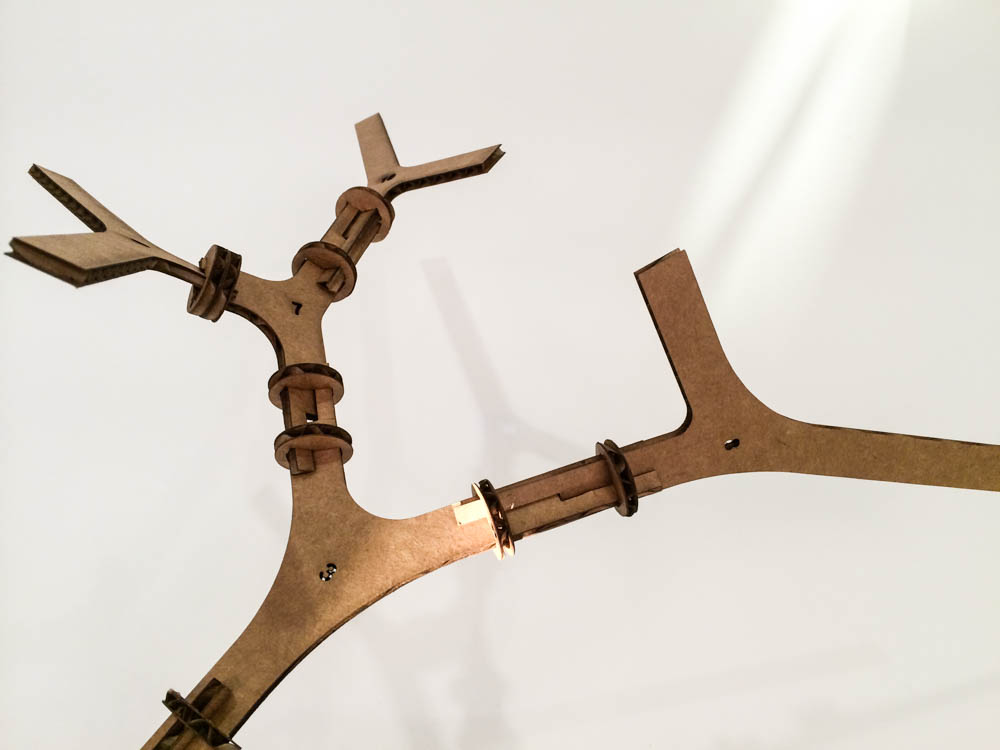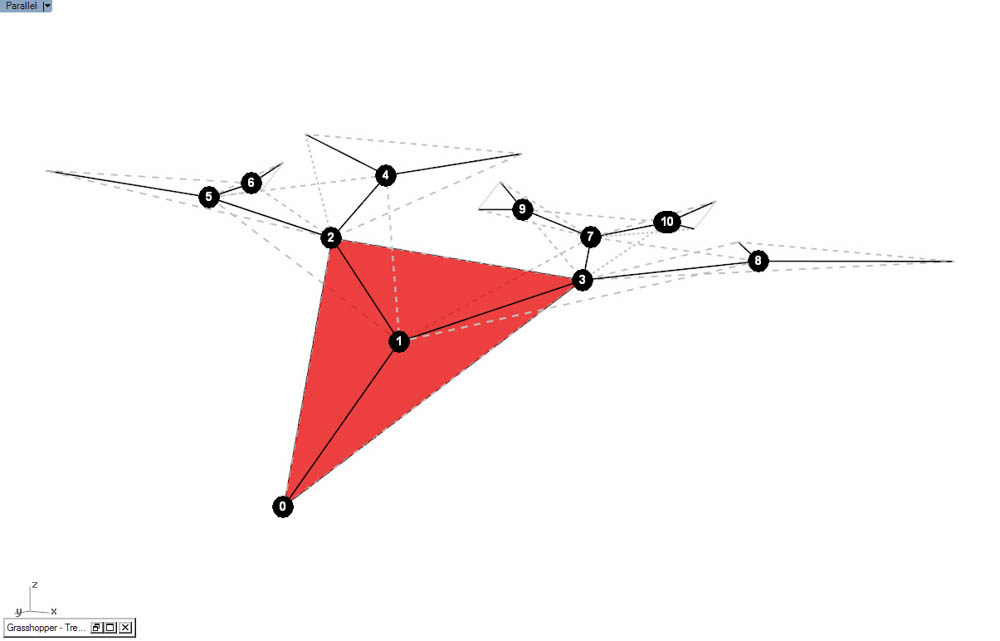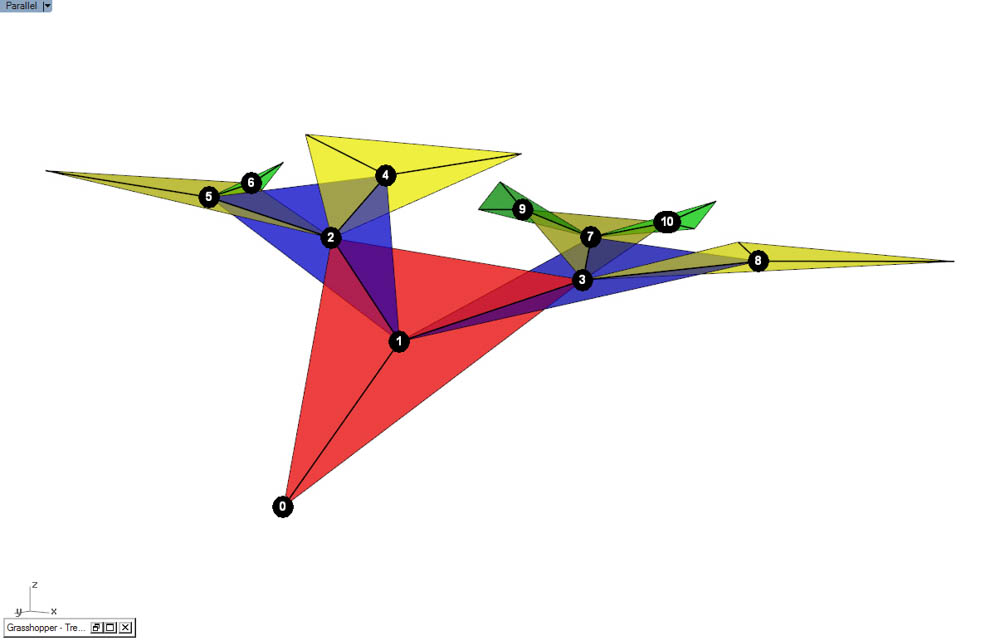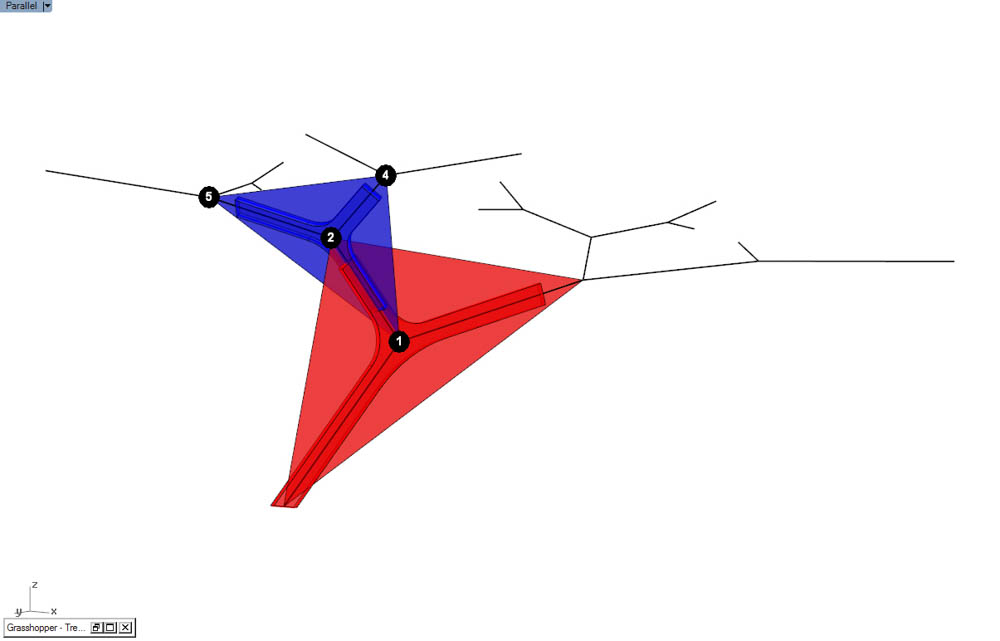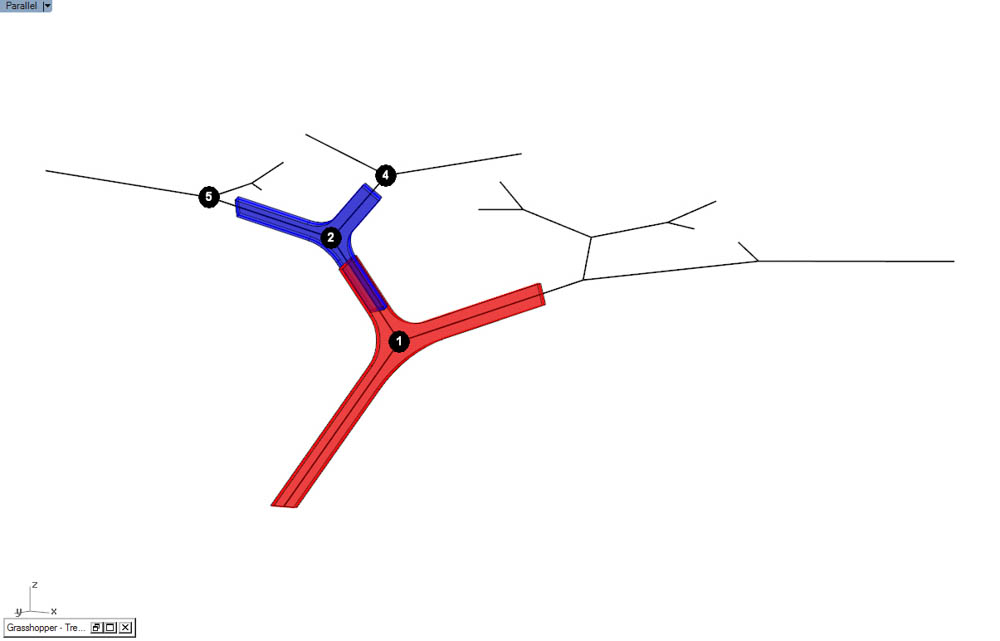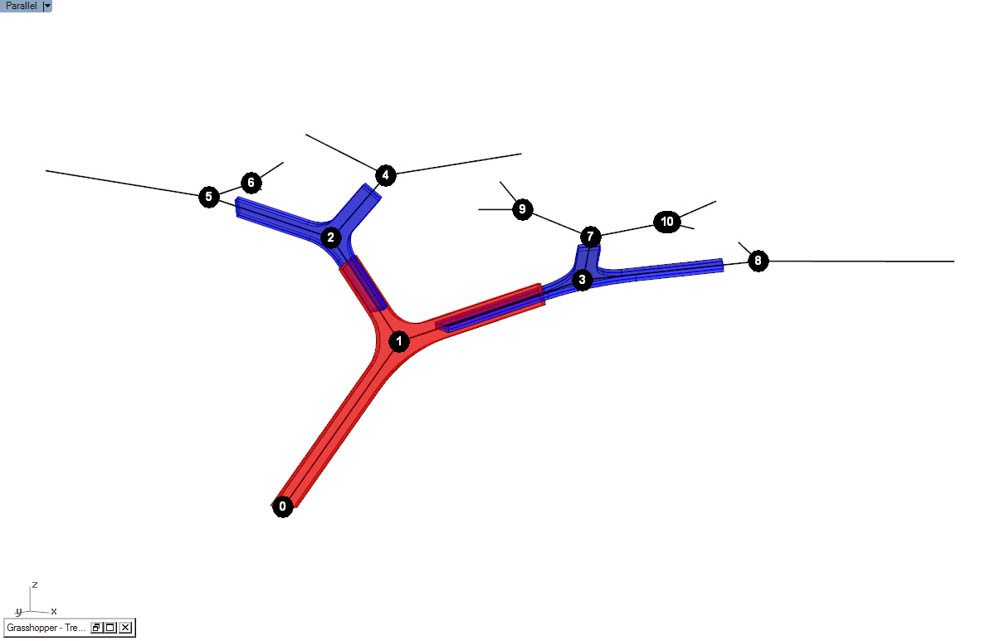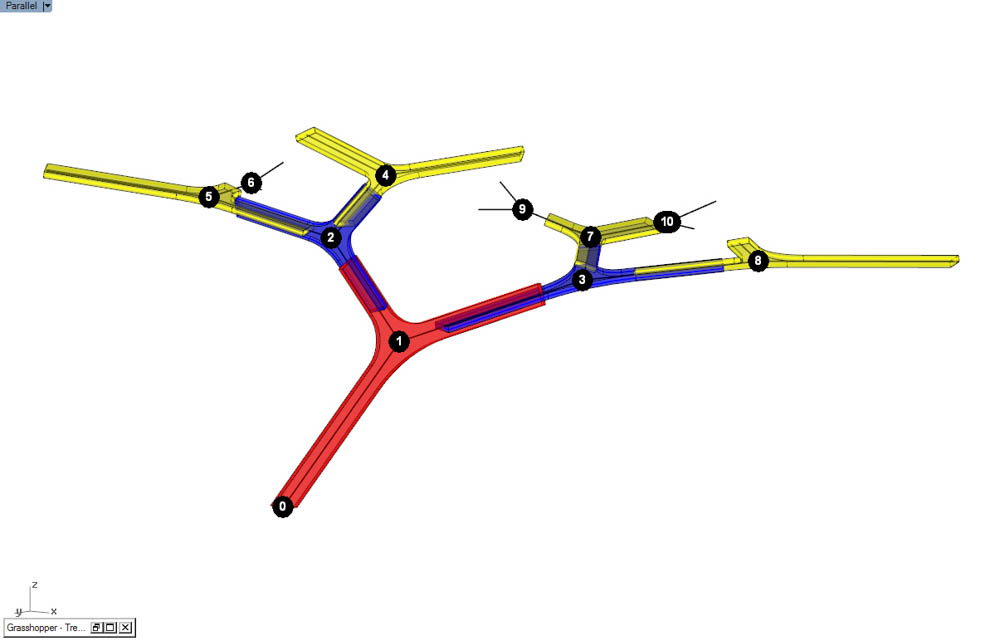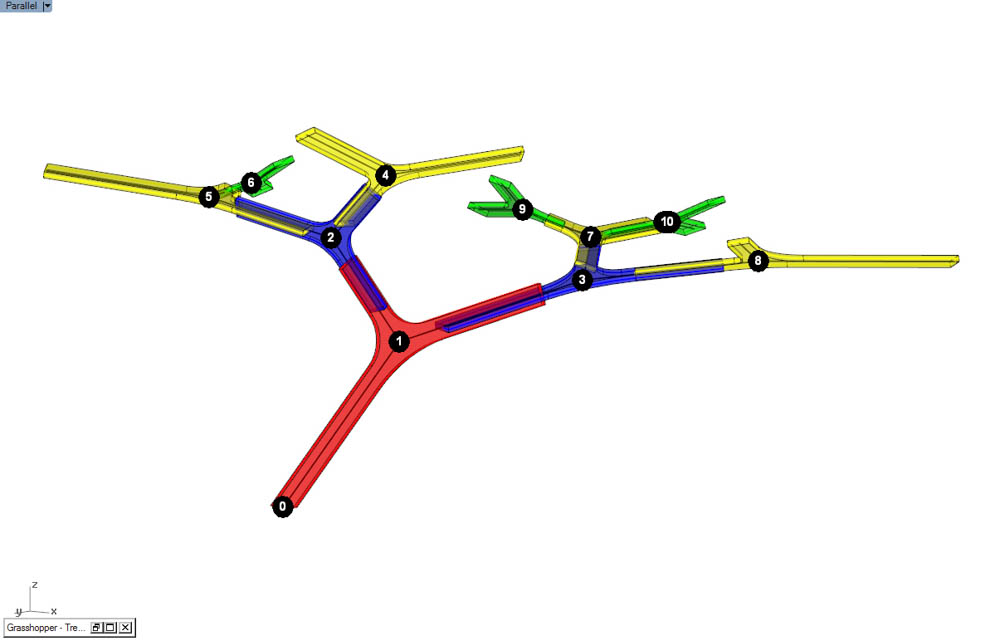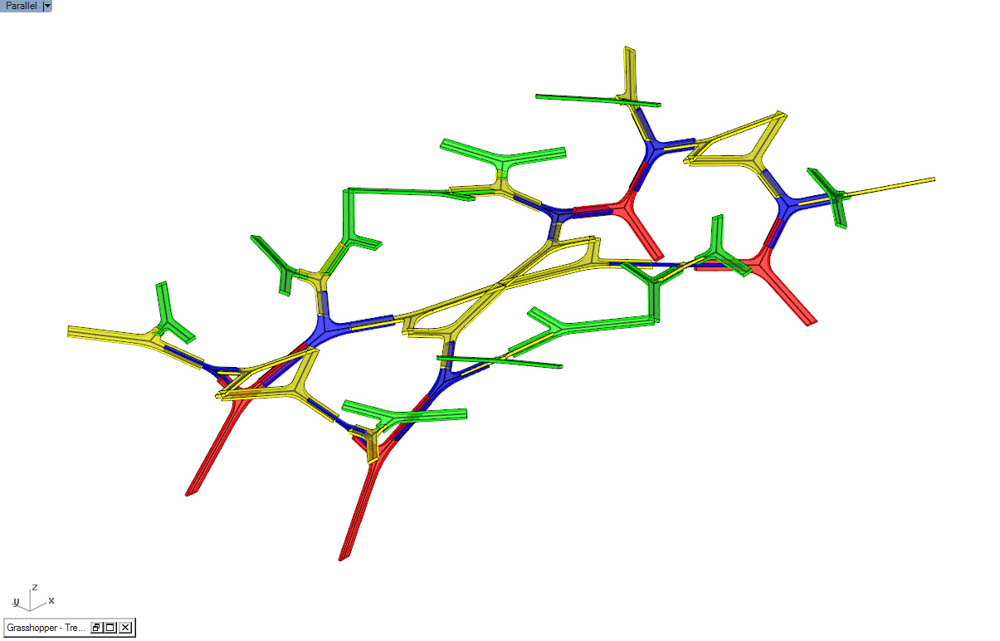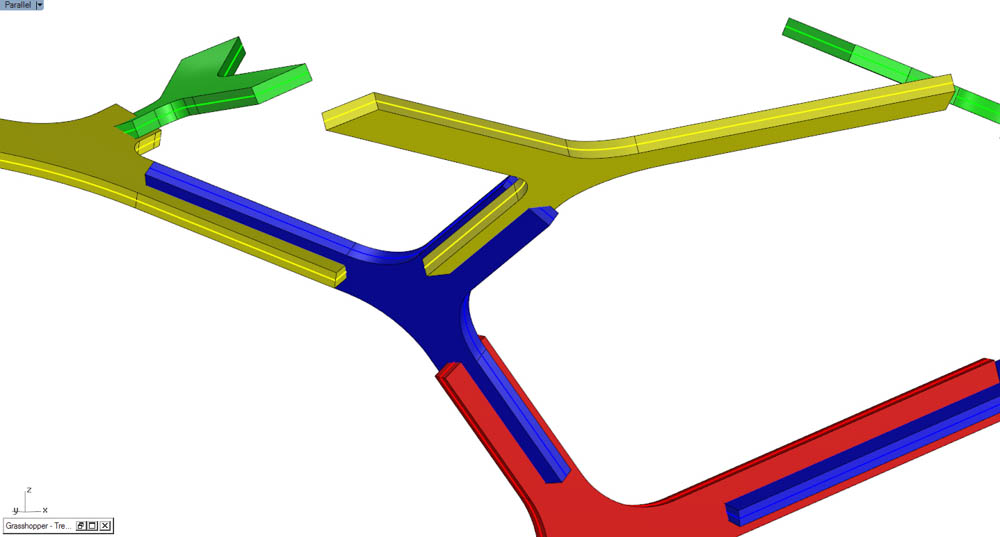How to Make (Almost) Anything
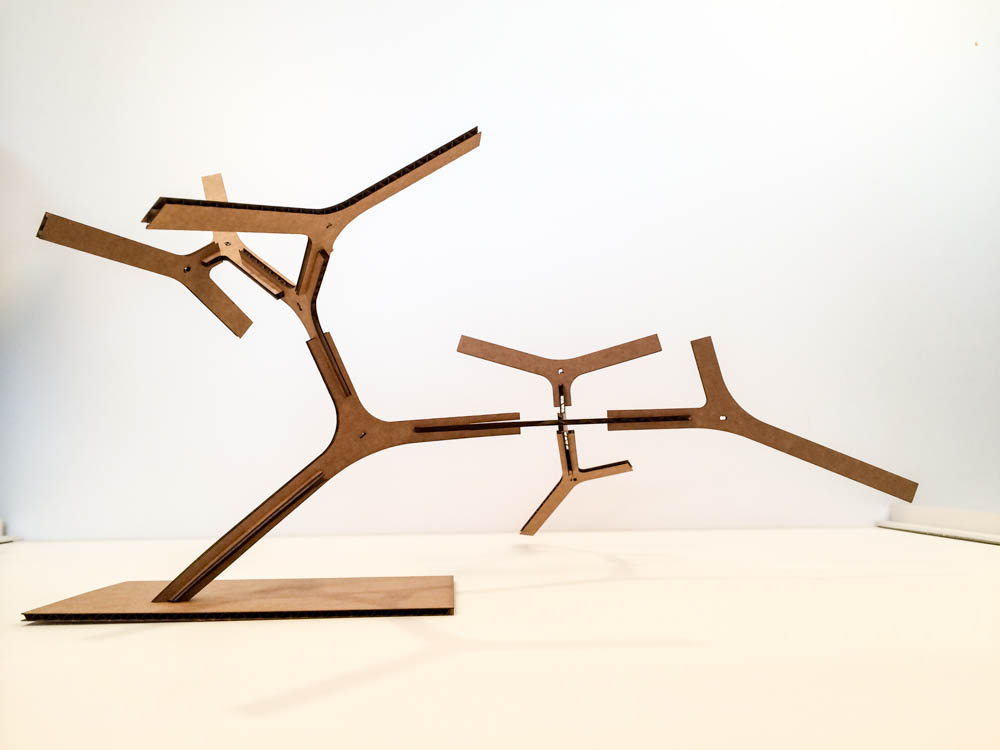
Project 02
System: Press-fit
Tool: Lasercut
Design: 3 Dimensional Tree Structure
This project explores inherent design issues in the process of translating 2D elements into 3D assembly system.
Material property, thickness, and fabrication method plays important role in determining the joint details and design tolerance. In this project, two different joint systems are explored in parallel to investigate the relationship of these variables.
Tree structure is generated by a set of user degined seed points and a target ground point. Internal network is generated by a custom desinged relaxation algorithm, where each interium point iteratively seeks for an optimum position in 3D space. This algorithm converges to a solution where each branching node becomes coplanar to the triangle defined by its adjacent points. This allows translation of 3D branching structure into a set of planar geometries suitable for lasercutting and other 2-axis NC machining process.
The first prototype explores standard press-fit joints between each planar element. After initial experiments with the cardboard, average laser kurf is estimated as 1/128". Given the relatively soft nature of the cardboard, design toleranece was set as 1/64". This has resulted in good press-fit joints. However, since the press-fit relies on the surface friction in both in-plane and out-of-plane edges, making close contact in both planes forces all the joints to be perpendicular to each other and as a result the physical assembly of the tree structure starts to deviate from the original design.
The second prototpe attempts to metigate this issue by inserting a set of angular templates at each joint. In order to allow adequate axial rotation at each joint, design tolerance was set back to zero and space left from laser kurf was used to enable such axial rotations. This second prototype returned relatively closer geometry as the original design. However, the joints have lost the rigidity achieved from the first prototype.
In summary, a balanced combination of the two prototype is required to satisfy both geometrical accuracy and rigidity. Each node can still be fabricated with the 2D elements as illustrated in this project; however, the connection between each planar element needs to re-established with cylindical elements such as pipes and tubes where connection between node and linear element can be established with press-fit while the end faces of the cylindical element can provide angular template for each node to satisfy the geometrical setout and accuracy.
